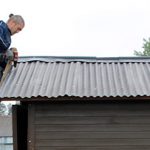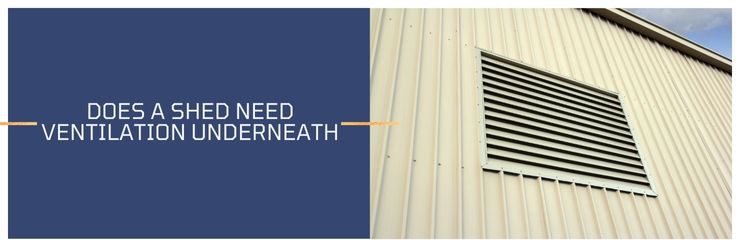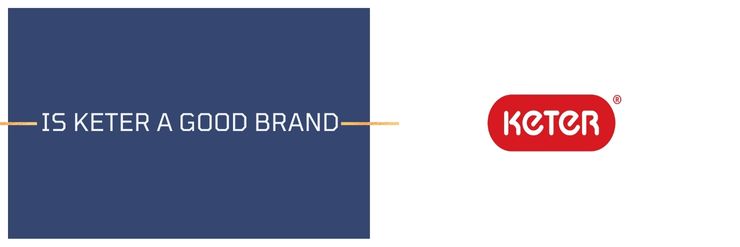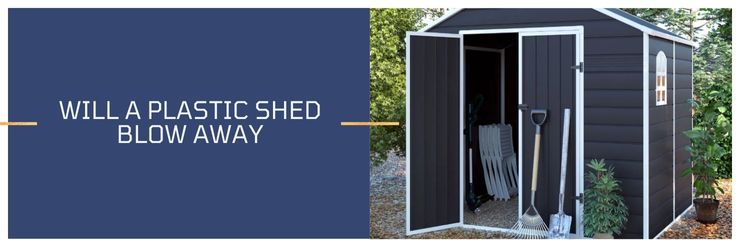If you’re planning on putting a shed onto concrete, the good news is that it’s definitely possible! The bad news is that it’s not as straightforward as just bolting the shed down. When it comes to backyard sheds, there are two main ways that people put them up: either on a wooden platform or directly onto concrete. But which one is better? And can you put a shed straight onto concrete?
Concrete foundations are expensive and best for heavy sheds without pre-made floors. A concrete foundation doesn’t drain water well. It is best when there is a base between the shed and concrete, that will allow air circulation to avoid any moisture damage. Gravel may be a better foundation.
Many have questions about placing a shed directly onto concrete or even a patio. This post will answer all your questions about where and how to place your shed. Keep reading to learn all about if and how you can put your shed straight onto concrete or not.
Can you put a shed straight onto concrete
It’s possible to put a shed straight onto concrete, but we wouldn’t recommend it.
A gravel base is a much better foundation for a shed, particularly if the shed has a pre-built floor.
Putting a shed straight onto concrete is ideal when the shed is very large and heavy or if it will be used as a garage for you to park your cars into.
The cost involved in making a concrete foundation is pretty big, and it’s best served when the shed or the things in need a more solid base.
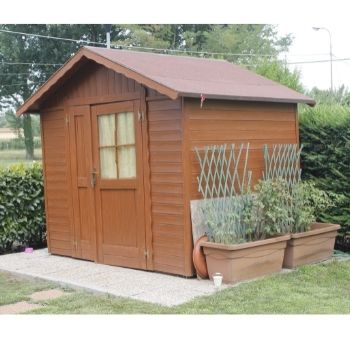
One issue with concrete is its ability to drain excess water. Putting a shed straight onto concrete may cause the shed to rot without proper drainage.
It’s best to put the shed on a level surface such as gravel, especially for small prefab sheds. Gravel offers much better drainage than concrete. If you must put the shed on concrete, make sure to put something under the shed to help with drainage.
Does a shed need a base if it’s on concrete?
If you are planning on putting your shed directly on top of concrete, then you won’t need a base.
However, If your shed comes with a shed floor, then we would recommend adding a base as it will help to keep the shed floor level and also provide extra protection from moisture.
You can make your base from pressure-treated lumber, this will help protect the shed by allowing better drainage and stopping moisture damage by allowing air to circulate under the shed.
Another quick and easy option for a shed base on concrete is to use something like HEXpave Grid (Amazon link). This is a strong plastic structure than can hold a shed and allows drainage.
Can you put a shed on a patio?
When it comes to putting a shed on a patio, there are a few things to consider. Sheds need to have proper drainage to avoid any moisture damage to the shed. If the shed has a floor then it’s always best to play it safe and raise it slightly above the patios to help with drainage.
Yes, you can put a shed on a patio, but there are a few things to consider before doing so.
The first is whether or not the shed will be properly supported. If not, it could collapse and cause damage to your property. If your patio is made from concrete then it might be strong enough, if it’s made from wood then you may need to consider your options.
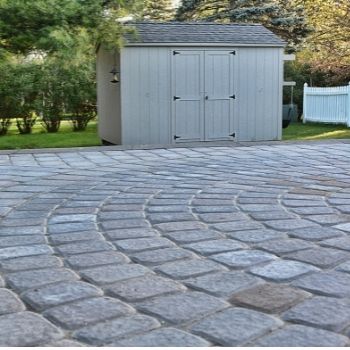
The second is whether the shed will interfere with any existing drainage on the patio. If so, you may need to make some modifications to ensure that water can still drain properly.
Finally, you should consider what kind of flooring material you will use for the shed. Does it have a floor pre-build? If not sitting directly on a patio should be no problem. If it does then you may need to consider if there will be adequate drainage for the shed to avoid the floor rotting.
If your shed is small and reasonably light, without a floor then there should be no problems placing it directly on a patio floor.
If your shed is heavier with a floor, you may want to consider a simple base to help keep the shed raised slightly. This will protect the shed from moisture damage.
Concrete Foundation vs. Other Kinds of Shed Foundations
All sheds are best to have some supports to help them structurally and from damage. Putting a shed straight onto concrete will depend on a few things but usually, it’s best to offer some drainage for the shed. Drainage can be achieved by adding a shed base.
Some of the most shed common foundations and bases are:
- Concrete
- Gravel
- Wooden skids
- Cinder blocks
Related article:
Concrete Foundations for Sheds
One of the strongest foundational support for a storage shed or garden shed is going to be a concrete slab. While the concrete is still wet you can anchor the shed to the base for the strongest connection.
When the concrete slab is much larger than the shed it allows for water to puddle on top of the concrete and that can cause rot and water damage inside of the shed. This is why it’s usually recommended to place a base between the shed and a concrete foundation.
| Concrete Slab Pros | Concrete Slab Cons |
| ● Will not be affected by insects or animals (like termites) ● Does not warp or move ● Creates a sturdy base for anchoring ● Anchors can be installed in wet concrete ● Very clean ● Concrete slab can be the floor of the shed | ● Difficult installation usually requires professional help unless you are experienced in pouring concrete yourself ● Is very expensive in both materials and labor ● Permanent location ● Water can pool on top of the concrete slab |

Wooden Foundations For Sheds
Wood alone is usually not enough to hold up a shed. That is why wooden frames for foundations sometimes incorporate the use of concrete blocks. The concrete blocks are placed around the perimeter of the base of the wood foundation to add more stability. You should use treated wood if you do not want to use concrete blocks.
Wooden foundations do not sit directly on the ground. The wooden foundation is attached to poles or pillars of wood that go down deep into the ground to create an anchor. It is essential to be careful with the depth of the installation of the wood pillars to ensure that the foundation sits completely even.
| Wooden Foundation Pros | Wooden Foundation Cons |
| ● Affordable ● Saves significant costs ● Wood insulates ● Can be custom built in any size ● Anchors into the ground with wooden beams or augers ● Sustainable ● Easier to move than concrete ● Easier labor | ● Could be damaged by wood-burrowing insects like termites ● If wood is untreated it can rot with water damage ● Wood can bend or warp with moisture and temperature |
Gravel Foundations For Sheds
A good option for small to medium-sized sheds is a gravel foundation. These are relatively easy to install and offer a good amount of support and drainage.
| Gravel Foundation Pros | Gravel Foundation Cons |
| ● Gravel drains water and moisture ● Easy installation process ● Work best with pre-made sheds ● Less expensive than concrete ● Easy to remove if you want to move the shed | ● Does not support heavy sheds enough ● Is not as strong as concrete ● Does not provide a floor for the shed |
Concrete Blocks Foundations For Sheds
We talked a little bit about using concrete blocks in combination with a wood foundation, but you can also use just rows of concrete blocks. This method does not give you any way to anchor down the shed using the foundation so you will need to use augers or dig holes filled with concrete to add brackets to in the corners of the shed.
If you are planning on moving your shed at any point in the future then concrete blocks may be a good solution for you since they are easy to move. It is only recommended to use concrete blocks for small to medium-sized sheds. The most important thing about using concrete blocks as a foundation is ensuring that they are leveled.
| Concrete Block Pros | Concrete Block Cons |
| ● Cheap ● Easy to move ● Easy to install ● Materials are inexpensive | ● Only works with small sheds ● Can not withstand heavy pressure ● May shift easily ● Can be difficult to level out ● Not enough support |
What is the Best Foundation For your Shed
Large Sheds
The best foundation for large sheds, garages, or sheds that contain heavy machinery is a solid slab of concrete. You can install anchors directly into the concrete slab.
Concrete slabs are great for sheds that do not come with a premade floor because you can use the concrete as the floor.
Medium Sheds
Gravel is the best solution for medium-sized sheds. This is mainly because gravel or crushed stone is great at draining water. It can prevent water damage this way.
Small Sheds
Some small sheds will not require a foundation but it is best to at least provide a base.
Having a space that allows air to circulate under the shed will help protect the shed from moisture damage and rot.
Conclusion
So, can you put a shed straight onto concrete? You can place a shed directly on concrete but it may not be completely wise to do so. Concrete is not great at draining water, gravel on the other hand is much better at draining water. A gravel foundation is a good option for sheds that need to be lightweight or have pre-made floors. Gravel is also less expensive than a concrete foundation.


